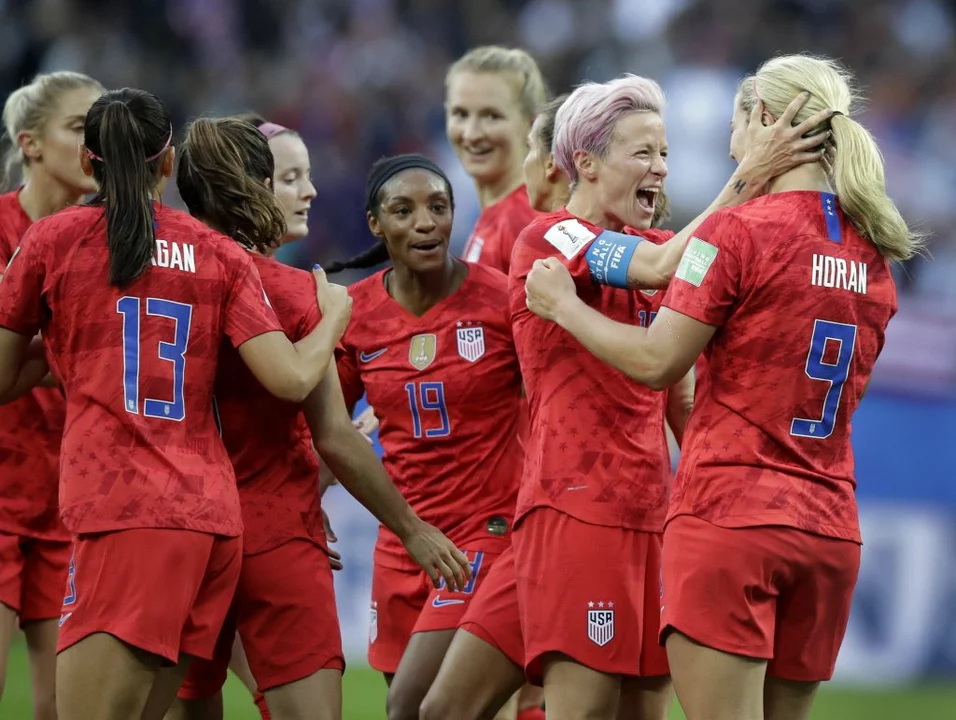Introduction: In the Shadows of Other Sports
It's no secret that soccer, or football as it is known in most parts of the world, is the most popular sport globally. However, in the United States, the women's soccer scene is not as popular as it could be. As a blogger and a soccer enthusiast, I am curious to explore the reasons behind this lack of popularity. In this article, I will discuss various factors that contribute to the limited viewership and interest in US women's soccer. So, let's dive in and try to understand the reasons behind this phenomenon.
1. Dominance of Other Sports in the US
The United States is home to numerous popular sports, with American football, basketball, and baseball being the most dominant. The immense popularity of these sports often overshadows other sports, including soccer. This is not limited to women's soccer alone, as men's soccer also struggles to gain a significant following compared to the more established sports leagues. This competition for viewership and fans can make it difficult for women's soccer to gain traction.
2. Lack of Media Coverage
Media plays a crucial role in popularizing any sport. Unfortunately, the US women's soccer team does not receive the same level of media coverage as their male counterparts or other popular sports. Limited television broadcasts, minimal news coverage, and a lack of marketing campaigns contribute to the lower visibility of the sport. Without adequate media coverage, it becomes challenging for the US women's soccer to attract more fans and grow in popularity.
3. Comparatively Short History
Compared to other sports in the US, soccer, in general, has a relatively short history. The first professional women's soccer league, the Women's United Soccer Association (WUSA), was only founded in 2001. While the league did not last long, it was later replaced by the Women's Professional Soccer (WPS) and eventually the National Women's Soccer League (NWSL). The comparatively short history of women's soccer in the US, combined with multiple league changes, has made it difficult for the sport to establish a strong and consistent fan base.
4. Unequal Pay and Resources
It is no secret that there is a significant pay gap between male and female athletes in most sports, including soccer. This unequal pay and allocation of resources can negatively impact the popularity of women's soccer. The lack of financial incentives and support can make it difficult for female players to fully commit to their careers and for the sport to attract more talent. This, in turn, can affect the quality of play and overall interest in the sport.
5. Limited Role Models and Visibility
Role models can play a significant role in inspiring young athletes and attracting fans to a sport. While there have been successful US women's soccer players, like Mia Hamm and Abby Wambach, the limited visibility of these athletes, especially compared to stars from other sports, can hinder the growth of the sport. Increased visibility and promotion of successful female soccer players can help inspire the next generation and attract more fans to the sport.
6. Soccer's Reputation as a "Foreign Sport"
Despite its global popularity, soccer is still often considered a "foreign" sport in the United States. This perception can create a barrier for some fans who may be more inclined to follow sports that are perceived as more "American." Overcoming this reputation and increasing the acceptance of soccer as a mainstream American sport can help boost the popularity of both men's and women's soccer in the US.
7. Insufficient Youth Programs and Development
For any sport to succeed, it is crucial to have strong grassroots programs and youth development systems in place. While there have been improvements in recent years, the US still has a long way to go in terms of providing equal opportunities and resources for girls interested in playing soccer. Investing in youth programs, coaching, and infrastructure can help nurture talent and ensure a bright future for the sport.
8. The Success of the US Women's National Team
One might think that the success of the US Women's National Team (USWNT), with their multiple World Cup and Olympic victories, would translate into increased popularity for women's soccer in the US. However, this success has not fully translated to the domestic league, where attendance and viewership remain relatively low. It is essential to capitalize on the USWNT's accomplishments and use their success to promote and grow the sport at a domestic level.
Conclusion: The Potential for Growth
While it is clear that US women's soccer faces several challenges in gaining popularity, there is also immense potential for growth. By addressing the issues discussed in this article, such as increasing media coverage, investing in youth development, and promoting the sport's role models, there is hope that women's soccer in the United States can capture the attention it deserves. It is up to all of us - fans, media, and organizations - to support and promote the sport to help it reach its full potential.
